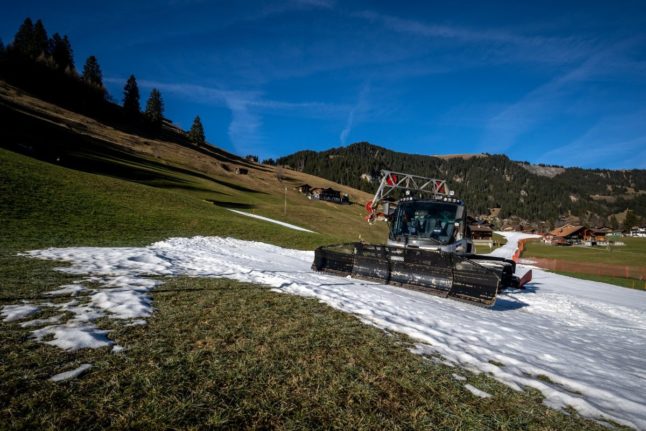If you’re heading to a Swiss ski resort, you’ll likely be wondering: what’s the condition of the slopes?
And it’s a good question. Due to the mild start to 2024, some ski resorts are struggling because there hasn’t been enough snowfall this. year.
For instance, the Dent-de-Vaulion ski area among the Jura mountains in the canton of Vaud is usually a popular destination for winter sports fans, but is drawing in less visitors this year.
That’s because the ski slopes have almost no snow on the ground.
“Green space instead of a snowy idyll: climate change is making Swiss ski areas sweat,” the Swiss news outlet Blick said on Monday.
It’s not the first time a lack of snow has hit sites. Last year, mild conditions resulted in several Swiss ski resorts closing.
Experts say the climate crisis spells bad news for the long-term outlook on the skiing industry in Europe.
According to Swiss weather site MeteoNews, this January was too warm overall, despite several days of icy conditions. It still remains mild – temperatures up to 11 or even 12C are possible in the canton of Vaud in the coming days, and there’s no snow forecast.
Some ski resorts are bringing in artificial snow to try and get round the problem. These include Wildhaus in the canton of St. Gallen.
Meanwhile, the Adelboden ski area in the Bernese Oberland is also struggling with too little snow.
READ ALSO: What you should know about skiing in the Swiss Alps this winter
How can you find out if there is snow on the slopes?
So that winter sports enthusiasts can be sure whether there is enough snow to enjoy their trip, Switzerland Tourism has launched the ‘snowticker’ platform in collaboration with the resorts. It is aimed at solving the problem of unknown piste conditions.
On the website, a map brings together webcams from all over Switzerland – from the 4 Vallées in Valais to Alt St. Johann, St Gallen, in eastern Switzerland. With a total of 814 cameras, images from the ski areas can be seen in real time.
There are often several webcams per winter destination. In Davos, for instance, you can check the piste conditions from 13 different stations.
Of course, even with a ‘snowticker’ it is difficult to estimate exactly what the slope conditions feel like. Even top skiing professionals can rarely judge just by looking to figure out how wet or grippy the snow is. Nevertheless, the webcams provide an insight into the amount of snow in the area.



 Please whitelist us to continue reading.
Please whitelist us to continue reading.
Member comments